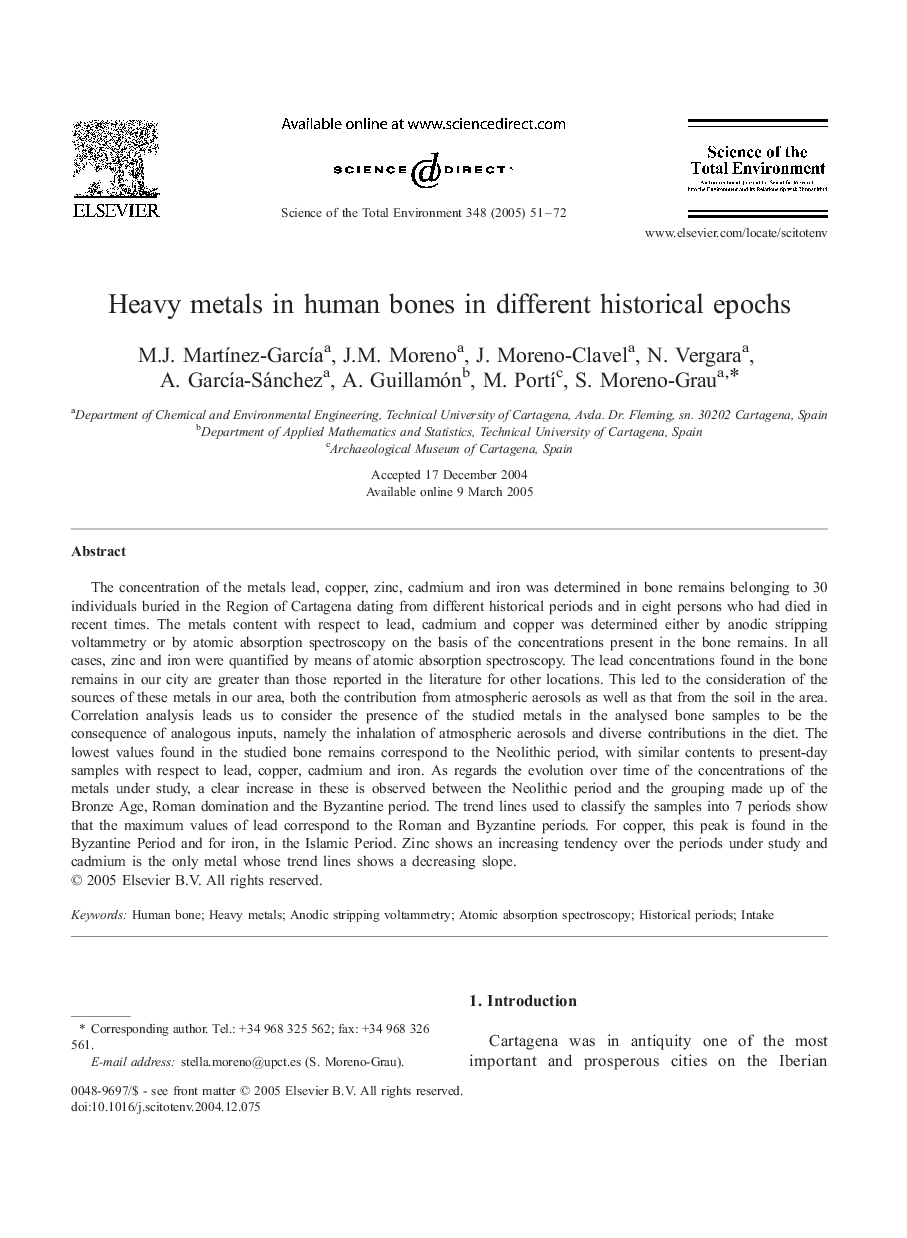| کد مقاله | کد نشریه | سال انتشار | مقاله انگلیسی | نسخه تمام متن |
|---|---|---|---|---|
| 10110636 | 1619990 | 2005 | 22 صفحه PDF | دانلود رایگان |
عنوان انگلیسی مقاله ISI
Heavy metals in human bones in different historical epochs
دانلود مقاله + سفارش ترجمه
دانلود مقاله ISI انگلیسی
رایگان برای ایرانیان
کلمات کلیدی
موضوعات مرتبط
علوم زیستی و بیوفناوری
علوم محیط زیست
شیمی زیست محیطی
پیش نمایش صفحه اول مقاله

چکیده انگلیسی
The concentration of the metals lead, copper, zinc, cadmium and iron was determined in bone remains belonging to 30 individuals buried in the Region of Cartagena dating from different historical periods and in eight persons who had died in recent times. The metals content with respect to lead, cadmium and copper was determined either by anodic stripping voltammetry or by atomic absorption spectroscopy on the basis of the concentrations present in the bone remains. In all cases, zinc and iron were quantified by means of atomic absorption spectroscopy. The lead concentrations found in the bone remains in our city are greater than those reported in the literature for other locations. This led to the consideration of the sources of these metals in our area, both the contribution from atmospheric aerosols as well as that from the soil in the area. Correlation analysis leads us to consider the presence of the studied metals in the analysed bone samples to be the consequence of analogous inputs, namely the inhalation of atmospheric aerosols and diverse contributions in the diet. The lowest values found in the studied bone remains correspond to the Neolithic period, with similar contents to present-day samples with respect to lead, copper, cadmium and iron. As regards the evolution over time of the concentrations of the metals under study, a clear increase in these is observed between the Neolithic period and the grouping made up of the Bronze Age, Roman domination and the Byzantine period. The trend lines used to classify the samples into 7 periods show that the maximum values of lead correspond to the Roman and Byzantine periods. For copper, this peak is found in the Byzantine Period and for iron, in the Islamic Period. Zinc shows an increasing tendency over the periods under study and cadmium is the only metal whose trend lines shows a decreasing slope.
ناشر
Database: Elsevier - ScienceDirect (ساینس دایرکت)
Journal: Science of The Total Environment - Volume 348, Issues 1â3, 15 September 2005, Pages 51-72
Journal: Science of The Total Environment - Volume 348, Issues 1â3, 15 September 2005, Pages 51-72
نویسندگان
M.J. MartÃnez-GarcÃa, J.M. Moreno, J. Moreno-Clavel, N. Vergara, A. GarcÃa-Sánchez, A. Guillamón, M. PortÃ, S. Moreno-Grau,